Lapping up Luzern’s lakefront serenity has transcended the ages with its seductive, stylish pull. In a city of bridges, there’s no mistaking what a scene-stealer Chapel Bridge, or Kapellbrucke, is. What you may not know is that the landmark was previously connected with another bridge, the Hof Bridge, which traipsed all the way to the glorious Hofkirche, feted for its vaulting twin towers. Yet in 1834, the Hof Bridge was dismantled to make way for the sweep of luxury hotels edging the lake. Powerfully emblematic of Luzern, it was a masterly stroke of good fortune that the redundant Hof Bridge had been kept in safe storage. After a devastating fire ripped through the Chapel Bridge in 1993, the old Hof provided a handy outlet for spare parts, rapidly deployed to resurrect the pre-eminent landmark. Originally forming part of the medieval town’s fortifications, 85 of the 110 paintings adorning the bridge were destroyed by the fire although a few burnt panels are still on display as a memorial, along with the panels which survived intact.
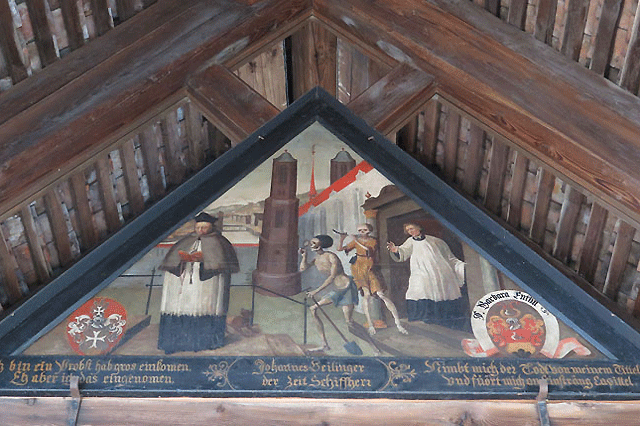
Also in the old town, I love gazing across the crenelated old city walls, crowned with nine towers, which have been keeping watch for 700 years. They’ve also been keeping time. The oldest of Luzern’s clocks, built in the Zyt tower in 1535, chimes hourly, exactly one minute before all the other city clocks, in honour of its heritage as a timekeeper for merchant ships. Explore the walls for spectacular panoramas over the rooftops. Dive into the old town, a resolutely preserved honeycomb of old burghers’ houses and tiny squares with tinkling fountains. Some of the timber-framed buildings flanking the cobbled streets are brightly painted in frescoes, denoting their back story and injecting the area with a rich storybook ambience. I love the picturesque Weinmarkt, central to medieval cultural life and lavish religious pageants. The square’s centrepiece is the colourful late gothic fountain crowned with St. Mauritius and flanked medieval warriors.
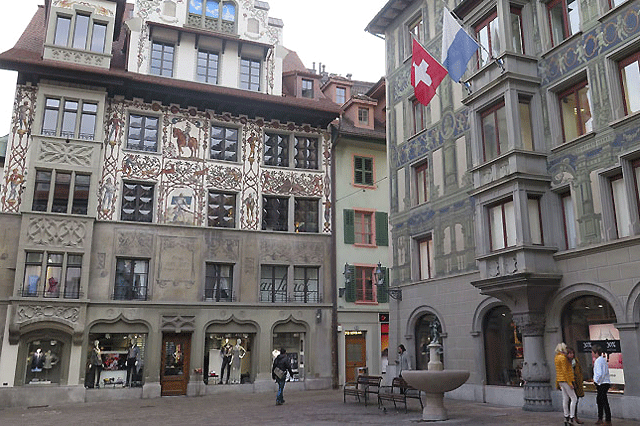
Feeling peckish? Venture into the Fondue House in the Altstadt, which offers several meat and cheese fondues (including one with Gruyère and garlic), as well as raclette – boiled potatoes topped in melted cheese, served with pickled onions and cucumbers. I also tried the traditional Luzern-style coffee, Kafi Luz, which dates back to the days when farmers would drink Schnapps before breakfast to warm up. Authorities banned the habit so the inventive farm folk surreptitiously poured their favourite tipple into their coffee. Nowaways, it’s been repurposed as an apres ski libation, consisting of coffee, sugar, whipped cream and fruit brandy, usually cherry, plum or prune brandy. Strolling over to the Lowenplatz area, don’t miss what is an epic war memorial, the immense Bourbaki Panorama, the world’s largest circular painting, completed in 1881.
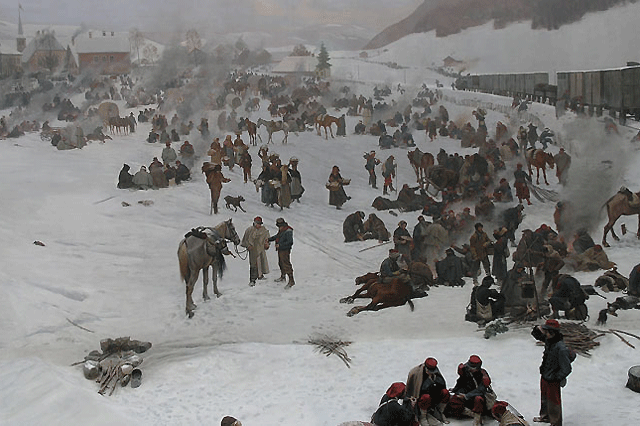
It’s the length of a rugby field and depicts in hyper-realism the retreat of the French Eastern Army into Switzerland in 1871 during the Franco-Prussian War. As you stand in the middle of this painting, life-size figures and an assortment of objects, like railway wagons, turn it into a confronting multi-sensory spectacle, underlining the devastation of war, with soldiers slowly succumbing and refugees scrambling across the Alps with their possessions. Tourists also swarm on the show-stopper in sandstone, the Lion Monument. This huge figure of a dying lion hewn from the face of the rock ledge, was designed by Thorwaldsen in 1820. The heart-tugging monument commemorates the death of the Swiss Guards who were killed while trying to protect King Louis XVI during the French Revolution in 1792. Mark Twain write that the monument is “the saddest piece of rock in the world.”
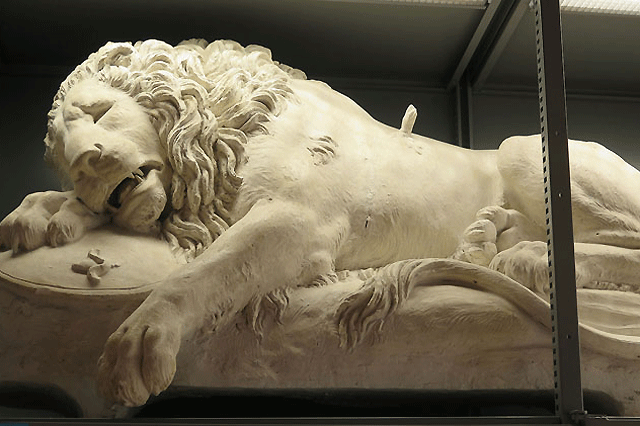
In a city endowed with pocket-sized museums and galleries, I delighted in delving into the Museum of History. Amid its trove of exhibits, the original Luzern Lion rests here. While being transported across the Alps from Italy, the sculpture was cracked and damaged. Backdropped by soaring peaks and skylined by piercing church spires and medieval towers, Luzern always makes me feel like I have drifted into a walk-in painting. Upon awakening, I was spell-bound by the mist gently rising off the water, as lake steamers pootled by, and the first rays of sunlight gilded the peaks that encircle Luzern like a fortressed cocoon. Luzern is a balcony town and I was peering out on the elemental vista from one of those trail-blazing luxury hotels, wrapped along the lakefront, where the Hof Bridge once stood. Constructed in the 19th century to cater to the wealthy wanderers on a Grand Tour and these grand dames underscore Luzern’s accomplished and enduring allure.
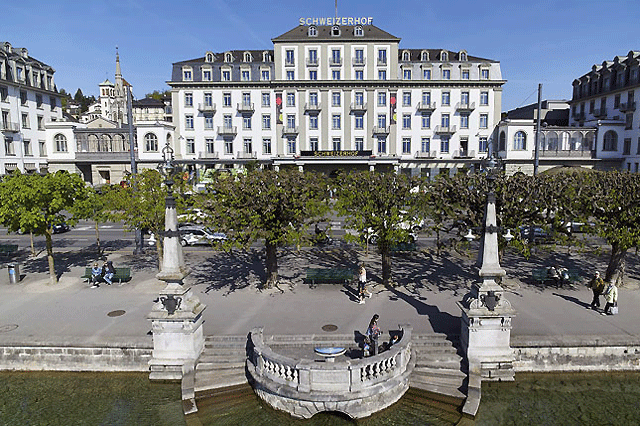
I stayed at the pioneering hotel, Schweizerhof, which boldly led the way down luxury lane, opening its doors in 1845. Over 170 years on, this graceful neo-Renaissance building is an architectural peach, recently crowned Europe’s leading Luxury Cultural Hotel at the World Luxury Hotel Awards. Central to its winning recipe is the fact that it’s been owned by the Hauser family since 1861, who across five generations, have continued passing the baton and maintaining its prized reputation for refined, personable hospitality. History seeps from the bones of this 101-roomed property, which has played to host to a glittering roll-call of luminaries. Every room has recently been refreshed and the hotel took the opportunity to share, honour and celebrate some of its legendary guests in the resulting room design elements – or “thumbprints” as they are called. Memorabilia, quotes and writings have been thoughtfully injected into every individually designed room.

Beyond the distinctive design elements, there are so many evocative anecdotes to discover – like how hotel guests protected themselves against the noise of Richard Wagner who was composing in his guest room. Or how a young 19 year old Winston Churchill was absolutely engrossed by the electric light of the hotel. I stayed in stunningly spacious Lifestyle Junior Suite, which was bright and airy, with a lakefront balcony for those celestial views. Elegantly furnished with comfortable lounge chairs and dream-inducing bedding, the plethora of creature comforts included free WiFi, minibar, home cinema, several dozen of English TV channels and an Amici coffeemaker. A divine buffet breakfast awaited me each morning in Galerie, one of two on-site restaurants. Whether you’re in-residence or not, dining at Galerie is quite the destination for the classical chateaubriand (thick cut of tenderloin steak), one of the fancy creations the guest chefs showcase, and for the sublime showcase of seasonal, regional dishes.
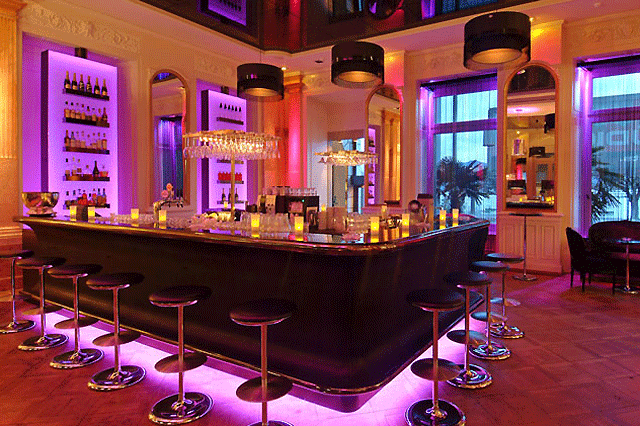
Luzern is a festival city with a very crowded calendar, and the hotel plays host to many of the city’s most vibrant events, including the World Band Festival and the Blue Balls Festival. Many of the after-show parties regularly take place at the Schweizerhof Bar. You never know who you might just bump into. Offering impeccable service, whip-smart attention to detail, seriously stylish décor and memorable accommodations, immerse yourself in the vibrant soul of Luzern at Hotel Schweizerhof Luzern, a proud member of Preferred Hotels & Resorts, which is currently celebrating its 50th Anniversary with a range of celebratory specials. iPrefer members receive free Internet, room upgrade, priority early check-in, late check-out, and points for free nights at this hotel. For the very best deals and seasonal specials, check out the iPrefer app, which includes member rates and rewards, or book direct at Preferred Hotels website.
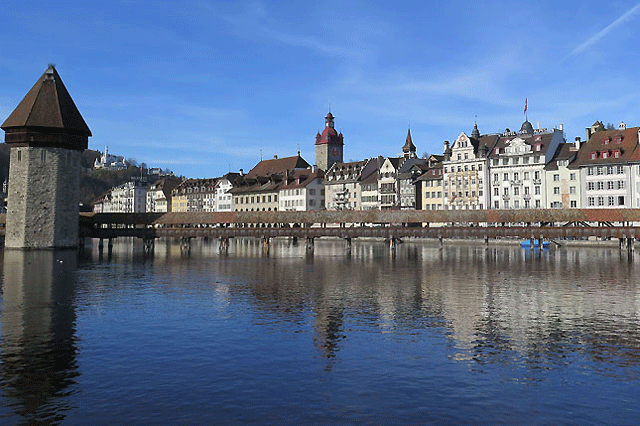
If you’re planning to dive deep into the wealth of historic and cultural attractions across the city, trim the admission bill by purchasing a Luzern Museum Card, providing access to 11 attractions including the Bourbaki Panorama. www.luzern.com
Travelling through Switzerland by train is an unforgettable visual symphony. Purchase a pass to suit your needs, in advance from Rail Europe, the experts in great rail travel. www.raileurope.co.nz

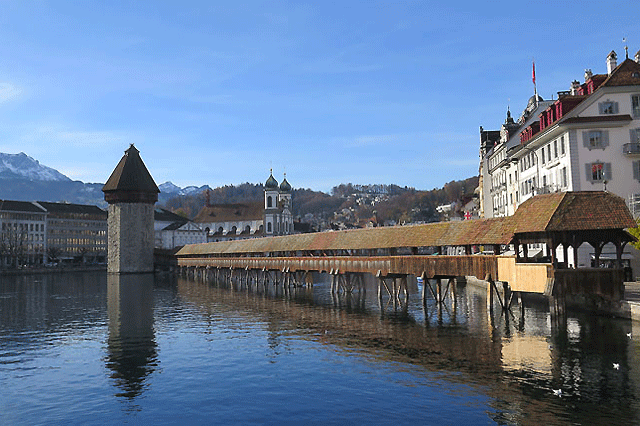

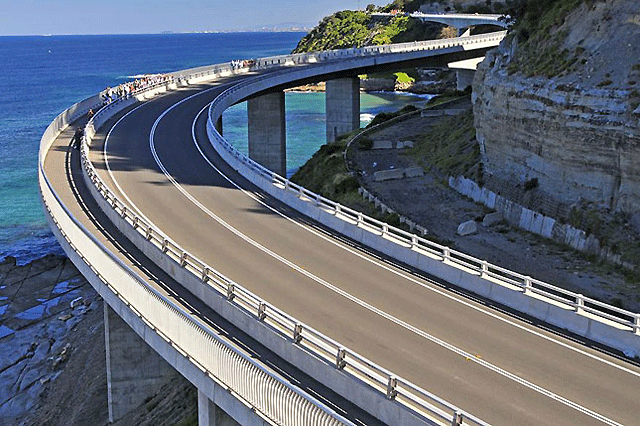
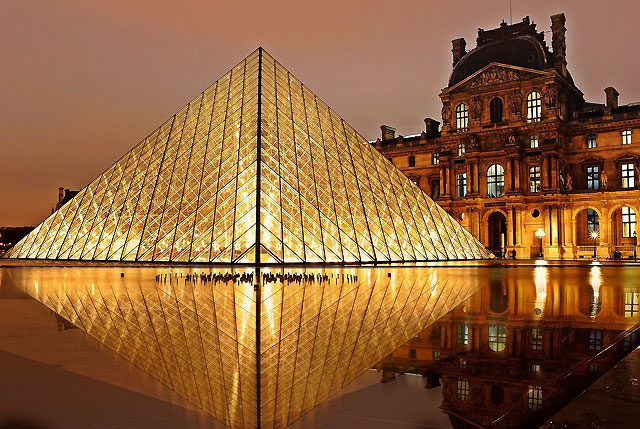
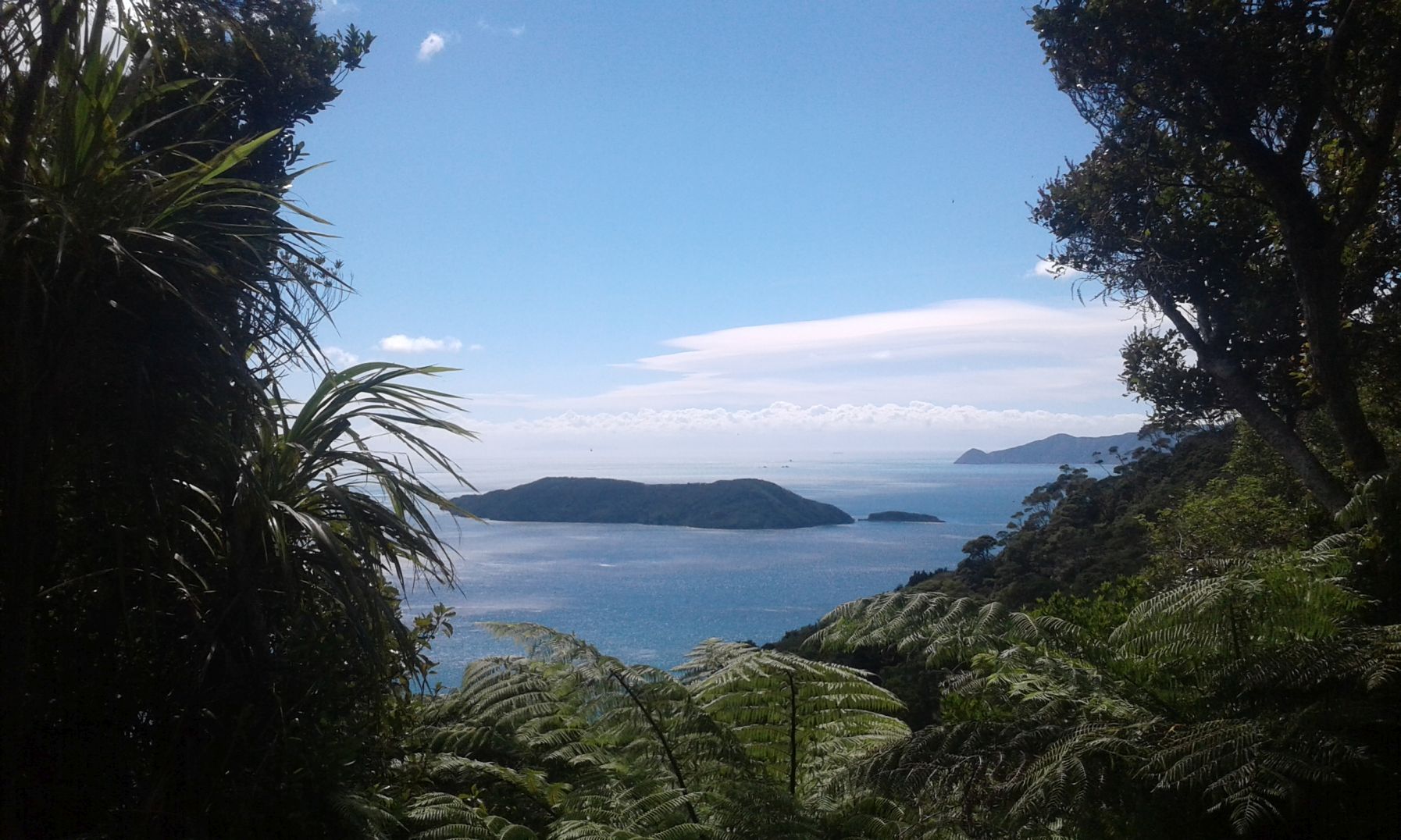
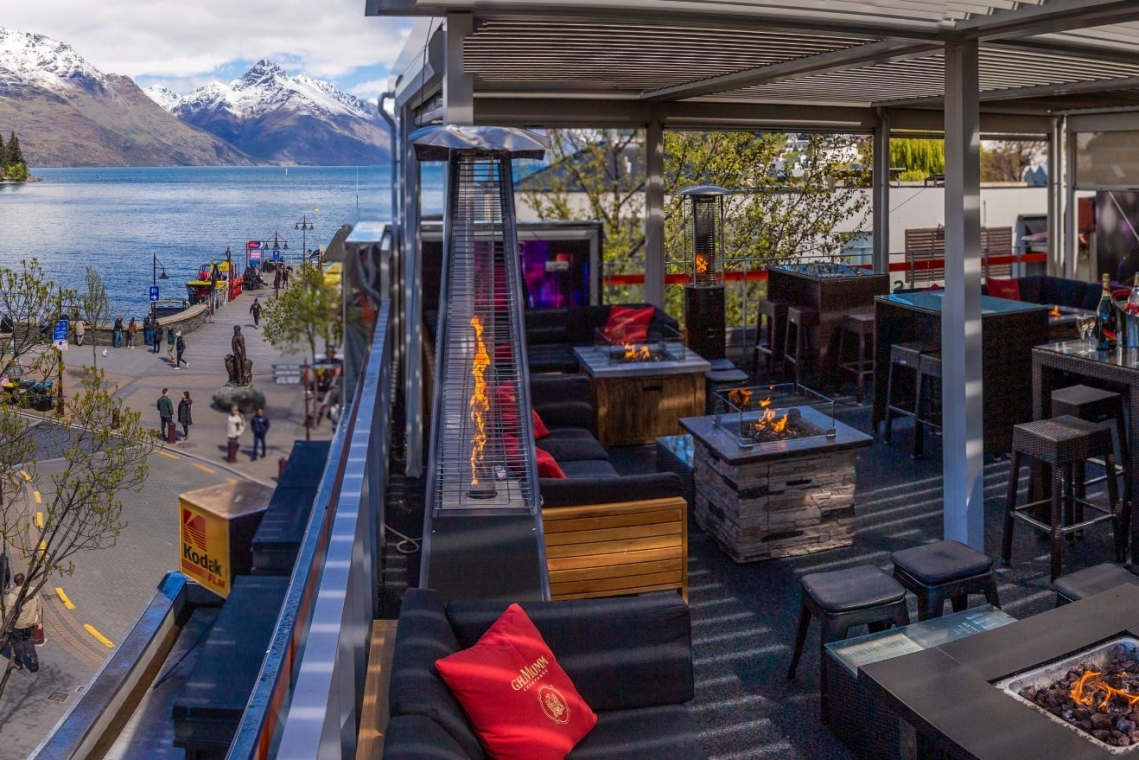
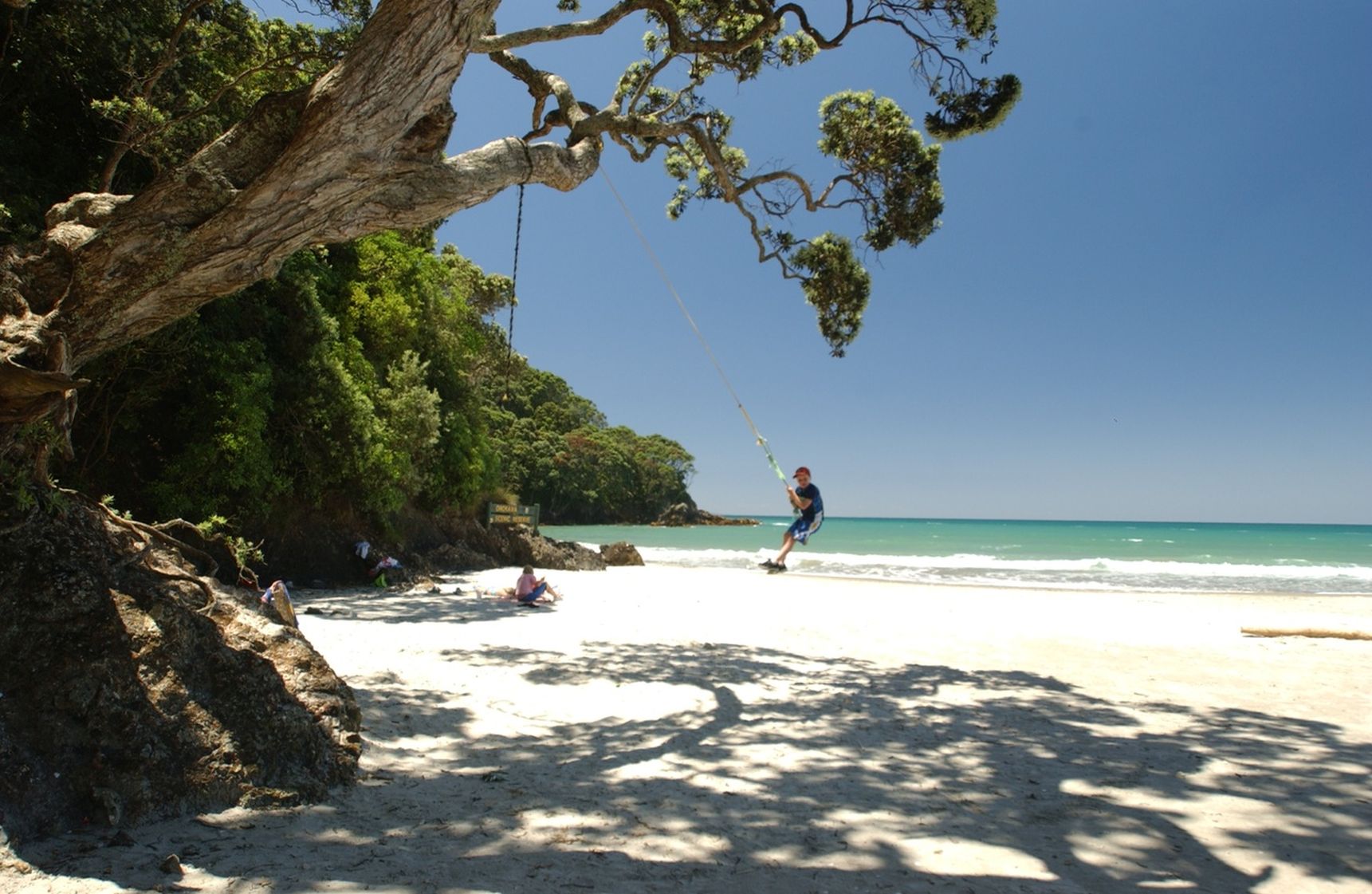
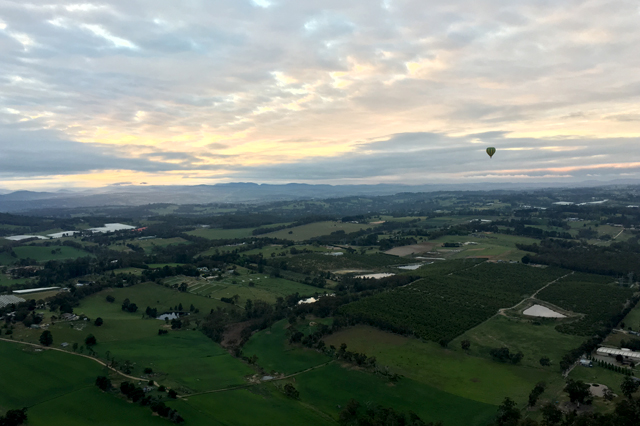

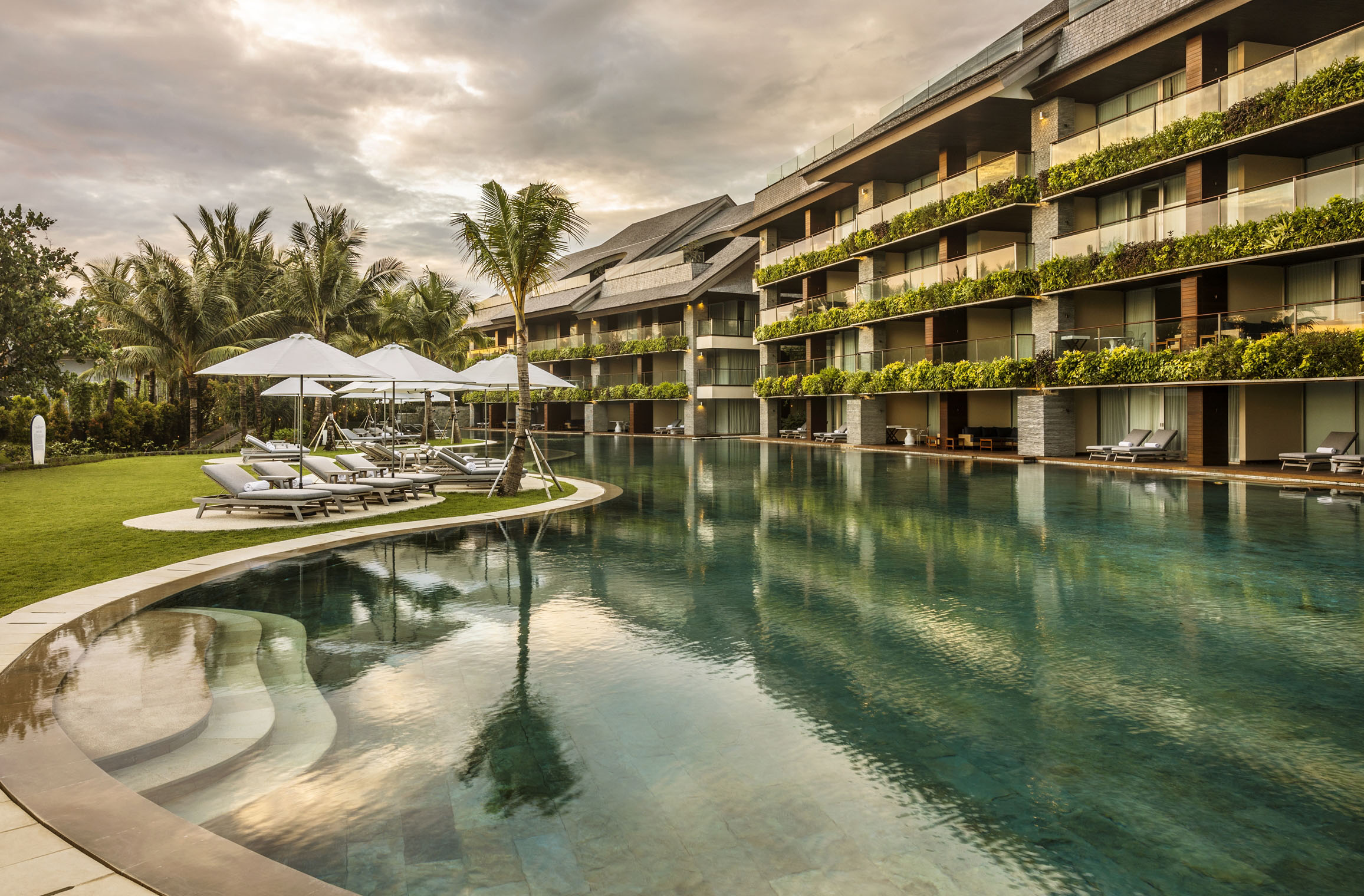
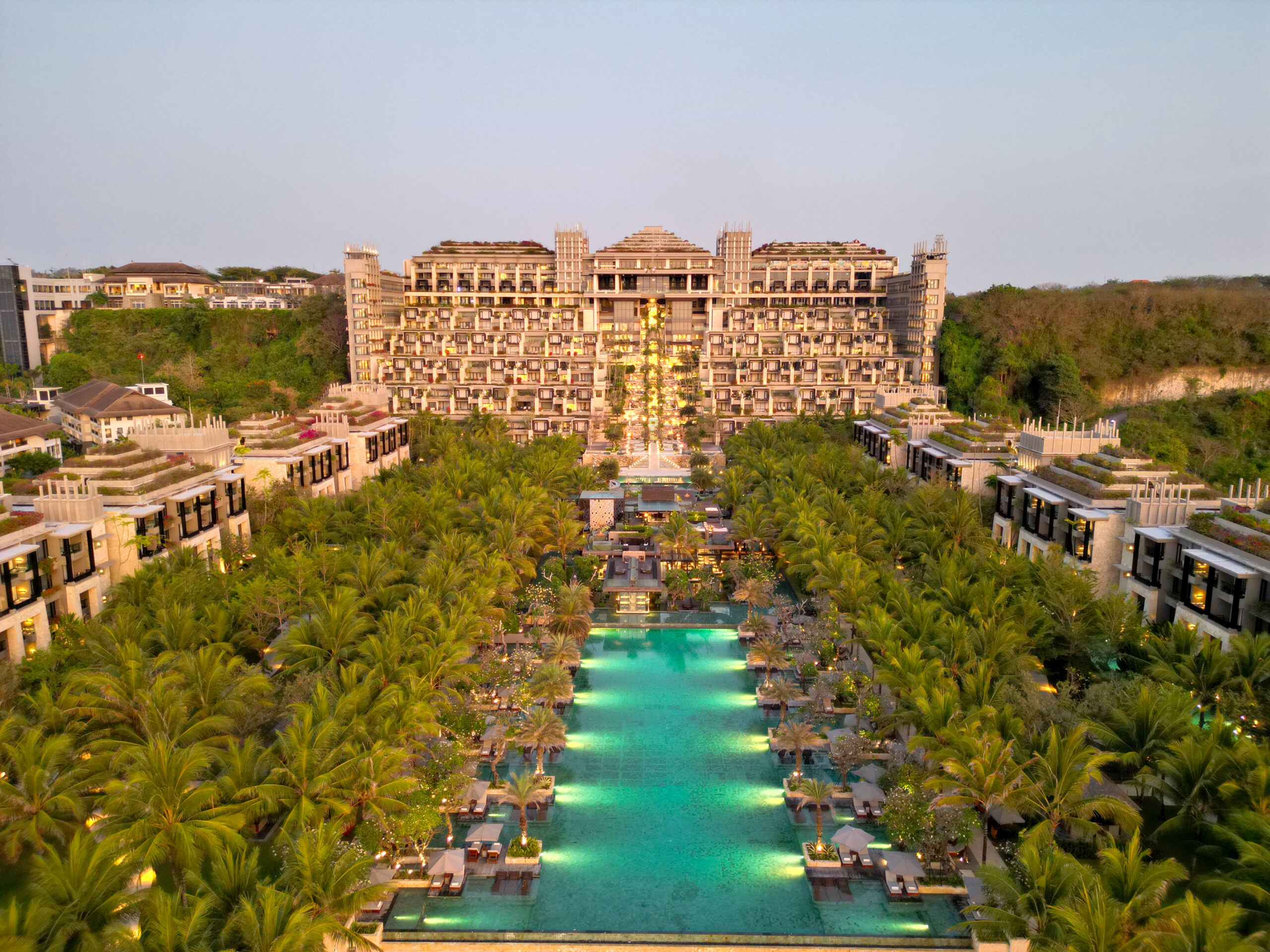
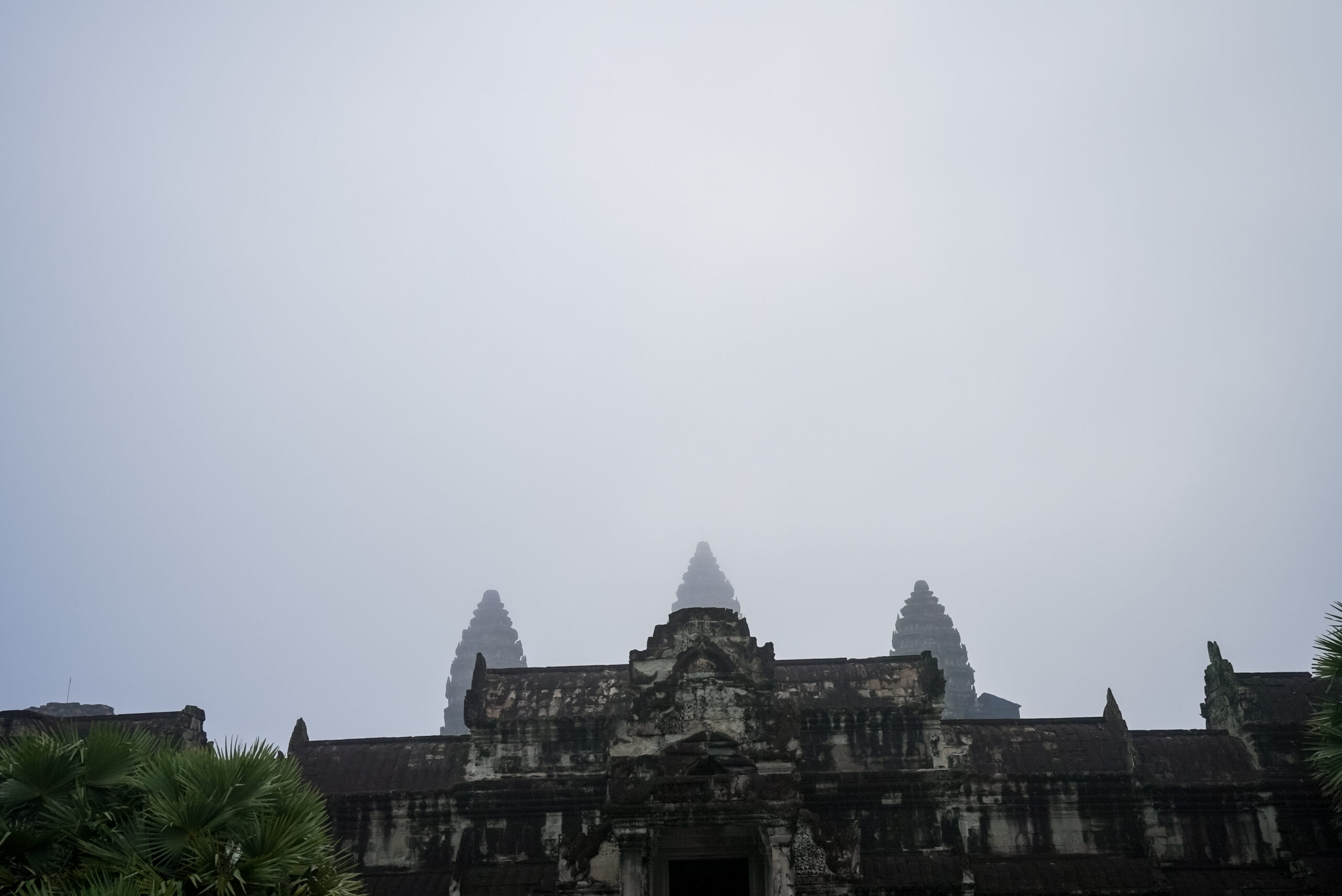
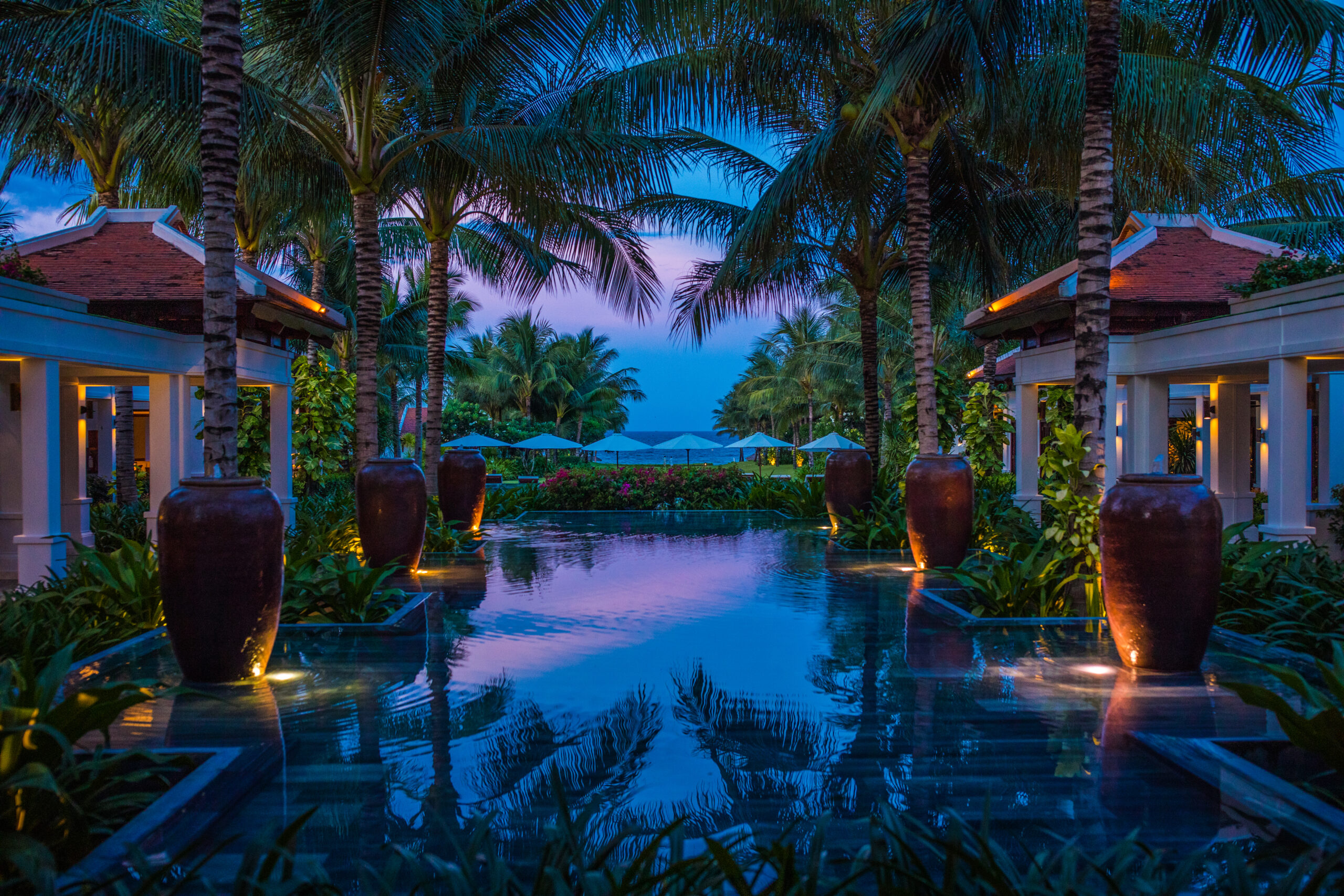
Recent Comments